Disclosure: This article contains affiliate links. We may earn a commission from purchases at no extra cost to you, which helps our travel content.
The Portuguese coastline has fascinated me for years, not merely for its stunning aesthetics but for the remarkable ecological interplay between land and sea. Cascais, with its dramatic limestone formations and diverse marine ecosystems, offers a perfect laboratory for the adventure-minded traveler. As a biologist who's traversed coastlines worldwide documenting natural pigments and traditional crafts, I've found few places that combine natural wonder and adrenaline-inducing activities quite like this gem just 30 minutes from Lisbon.
The Geological Marvel of Boca do Inferno
My scientific curiosity always leads me first to Boca do Inferno ('Hell's Mouth'), where millions of years of oceanic persistence have carved a spectacular natural arch and cave system into the limestone cliffs. The geological formation process here mirrors what I've studied in marine environments worldwide—persistent wave action gradually dissolving calcium carbonate structures to create these dramatic features.
Visiting during high tide offers the most dramatic experience, as waves crash through the arch with thunderous force, creating magnificent spray patterns that catch the golden Portuguese light. I recommend arriving with a waterproof phone pouch to safely capture these dramatic moments without risking your electronics. The surrounding cliffs provide excellent vantage points for photography, particularly during the 'golden hour' before sunset when the limestone takes on a warm amber glow reminiscent of the traditional ceramic glazes I've documented throughout Portugal.
For the geology enthusiasts, the visible stratification in the cliff faces tells a compelling story of the region's formation over millions of years—a natural historical record that I find endlessly fascinating.

💡 Pro Tips
- Visit at high tide for the most dramatic wave action
- Follow the clifftop path for progressively better viewpoints
- Bring polarized sunglasses to cut glare and see the true colors of the rock formations
Surfing the Atlantic Swells: A Scientific Approach
As both a biologist and an adventure enthusiast, I've always been fascinated by the physics of surfing—the perfect convergence of oceanography, meteorology, and human athleticism. Cascais and its neighboring Guincho Beach offer some of Portugal's most consistent surf breaks, suitable for various skill levels.
During my week in Cascais, I dedicated three mornings to surfing at Praia de Carcavelos, where the beach break provides forgiving conditions for intermediate surfers like myself. The water temperature in summer hovers around 18-20°C (64-68°F), comfortable enough with a spring wetsuit that provides just enough thermal protection without restricting movement.
What makes surfing here particularly interesting from a scientific perspective is observing how the continental shelf topography influences wave formation. The underwater canyon systems offshore channel Atlantic swells toward the coast in fascinating patterns that create predictable breaks. For those wanting to understand this phenomenon better, I recommend booking a lesson with the local surf schools who explain these natural dynamics as part of their instruction.
After analyzing tide charts and swell predictions (a habit from my research days), I found that early mornings consistently offered the cleanest conditions before the afternoon winds picked up. The diversity of marine life visible while waiting for waves—from various fish species to occasional dolphin pods—added another layer of biological interest to the experience.

💡 Pro Tips
- Check surf forecasts on Magic Seaweed for Carcavelos and Guincho beaches
- Book lessons with Moana Surf School for excellent technical instruction
- Consider renting rather than bringing your own board for convenience
Sea Cave Exploration: Where Biology Meets Adventure
The limestone coast between Cascais and Sintra harbors a network of sea caves that represent both geological wonders and unique microhabitats. As someone who's studied marine ecosystems professionally, exploring these caves by kayak became the perfect blend of scientific observation and adventure.
I booked a half-day sea kayaking tour with Cascais Water Adventures that departed from Cascais marina, equipped with my dry bag backpack to protect my research journal and camera. Our guide, Miguel, possessed an impressive knowledge of local marine biology that satisfied even my professional curiosity.
The ecological transition zones within these caves—where sunlight penetrates in diminishing gradients—create fascinating microhabitats. In the cave entrances, I observed diverse algae species and invertebrates adapted to intermittent light conditions. Deeper inside, where darkness prevails, different adaptation strategies become evident.
Paddling through narrow passages that open into spectacular chambers, I was reminded of similar limestone formations I'd studied in Vietnam's Ha Long Bay, though here the Atlantic's more turbulent waters have carved more dramatic features. The waterproof headlamp I brought proved essential for examining the ceiling formations and spotting the small bats that occasionally make these caves their home.
The interplay of light, water, and stone creates an almost otherworldly experience, particularly when sunbeams penetrate through ceiling apertures, illuminating the turquoise water from above—a phenomenon best observed during mid-day excursions.
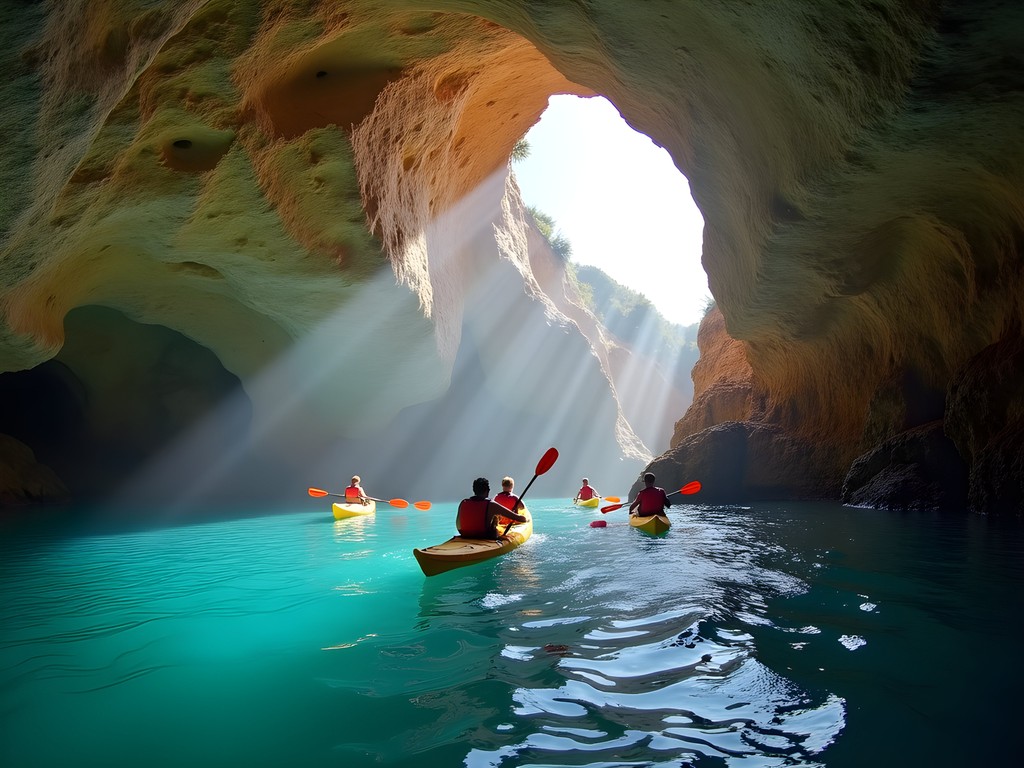
💡 Pro Tips
- Book sea cave kayaking tours at least 2 days in advance during peak season
- Wear quick-dry clothing as you'll inevitably get splashed
- Bring a waterproof camera or phone case to document the cave interiors
Coastal Hiking: The Sintra-Cascais Natural Park
The coastal hiking trails connecting Cascais to Cabo da Roca (Europe's westernmost point) traverse the Sintra-Cascais Natural Park, offering an exceptional opportunity to observe the region's biodiversity and geological features on foot. As a biologist, these trails provided me with a comprehensive transect of the coastal ecosystem.
I dedicated a full day to hiking the most scenic portion from Praia da Adraga to Cabo da Roca, an intermediate 7km trail that showcases dramatic cliff formations, endemic flora, and unparalleled Atlantic vistas. The microclimate here supports a fascinating array of plant species adapted to salt spray and strong winds—evolutionary adaptations that parallel coastal environments I've studied worldwide.
My trekking poles proved invaluable on the occasionally steep and rocky sections, providing stability while reducing impact on my knees. The trail alternates between clifftop paths and brief descents to hidden beaches, creating a rhythmic journey through varying ecological zones.
What struck me most was the remarkable adaptation of the vegetation—from wind-sculpted pines to specialized coastal succulents that have developed strategies for water conservation despite constant salt exposure. These botanical observations reminded me of similar adaptations I've documented in coastal Morocco, though here the Atlantic influence creates distinct evolutionary pressures.
The birdlife along these cliffs adds another dimension of interest, with peregrine falcons and various seabird species nesting in the vertical rock faces. I recommend carrying compact binoculars to observe these aerial hunters in action—a highlight for any nature enthusiast.
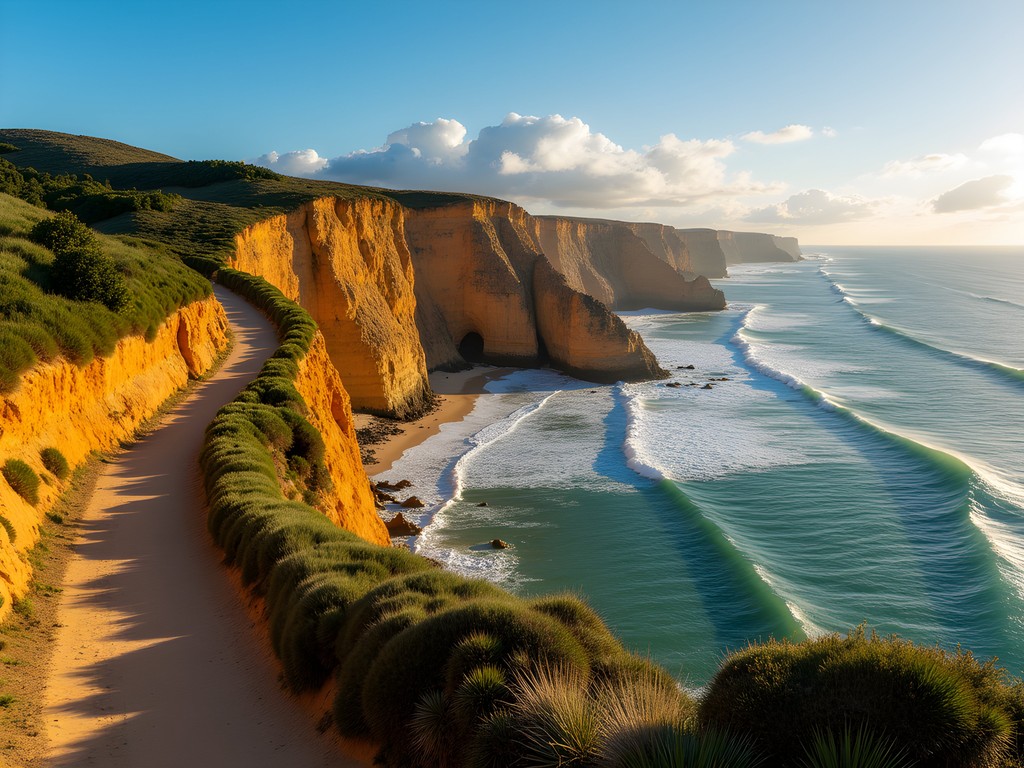
💡 Pro Tips
- Start early to avoid afternoon heat and crowds at viewpoints
- Download the trail map on AllTrails as cell service is spotty
- Pack more water than you think you'll need as there are few refill points
Cultural Immersion: Connecting with Local Artisans
While Cascais offers abundant natural adventures, my research background in traditional crafts inevitably draws me to explore the cultural dimensions of any destination. Between adrenaline-fueled activities, I discovered that Cascais harbors a thriving community of artisans whose work reflects the region's maritime heritage.
In the old town, I spent a fascinating afternoon at the studio of Teresa Martins, a ceramic artist whose glazing techniques incorporate natural pigments derived from local mineral deposits—a perfect intersection of my scientific and artistic interests. Her blue tones, reminiscent of the varying depths of the Atlantic waters visible from Cascais' shores, employ traditional methods that date back centuries.
Nearby, at the small weekend artisan market near Casa das Histórias Paula Rego, I found António, a craftsman creating traditional fishing lures using techniques passed down through generations. His workshop demonstrated the intimate knowledge of marine life that local fishermen have developed—an ethnographic dimension of marine biology that often goes undocumented in academic research.
For those interested in bringing home meaningful souvenirs that support local craftsmanship, I recommend the travel scarf with hidden pocket. I found this invaluable for securely carrying my phone and wallet while exploring the market, and it doubles as protection against the persistent sea breeze that defines Cascais' microclimate.
These cultural encounters provided valuable context for understanding the human relationship with the coastal environment—how the same natural forces that create adventure opportunities have shaped local traditions and livelihoods over centuries.

💡 Pro Tips
- Visit the artisan market on weekend mornings before it gets crowded
- Ask artisans about the natural materials they use—most are happy to explain their techniques
- Look for ceramics with traditional Portuguese patterns that incorporate marine elements
Final Thoughts
Cascais represents what I value most in travel destinations—places where natural wonders create not only opportunities for adventure but windows into understanding ecological processes and human adaptations. From surfing Atlantic swells to exploring limestone caves and hiking windswept cliffs, this coastal gem offers a perfect laboratory for the scientifically-minded adventure seeker.
What distinguishes Cascais from other coastal destinations I've explored is the accessibility of its diverse experiences. Within a compact geographical area, solo travelers can move easily between adrenaline-inducing activities and moments of scientific wonder or cultural discovery. The well-developed infrastructure supports independent exploration while preserving the authenticity that makes this region special.
As climate change continues to impact coastal environments worldwide, I encourage travelers to approach these adventures with awareness and respect. The geological formations, marine ecosystems, and cultural traditions that make Cascais extraordinary have evolved over millennia but remain vulnerable to both global pressures and tourism impacts. By engaging thoughtfully with this remarkable coastline—observing, learning, and treading lightly—we contribute to preserving these experiences for future generations of adventurers and scientists alike.
✨ Key Takeaways
- Cascais offers an ideal blend of adventure activities and natural wonders within easy reach for solo travelers
- The geological and ecological diversity creates multiple adventure environments in a compact area
- Combining adventure with cultural experiences provides deeper understanding of the region's connection to the sea
- Summer offers ideal conditions for most activities, though spring and fall provide less crowded experiences
📋 Practical Information
Best Time to Visit
June through September, with July-August offering warmest temperatures but larger crowds
Budget Estimate
€100-150/day including accommodations, activities and meals
Recommended Duration
5-7 days
Difficulty Level
Moderate

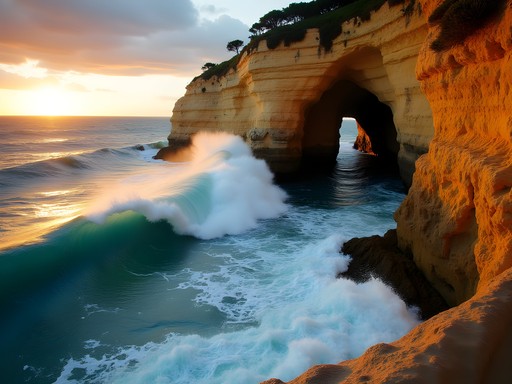
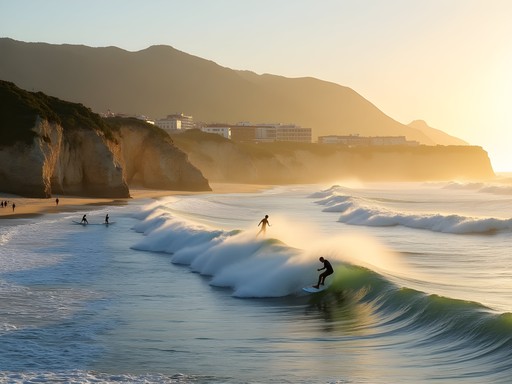
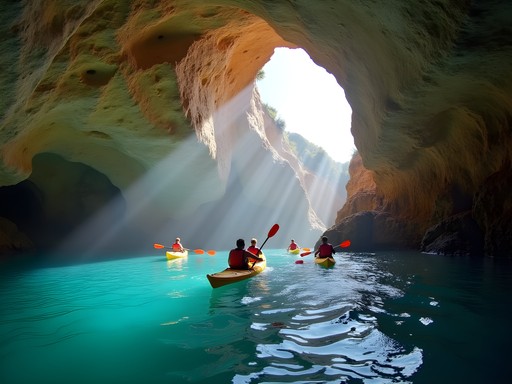
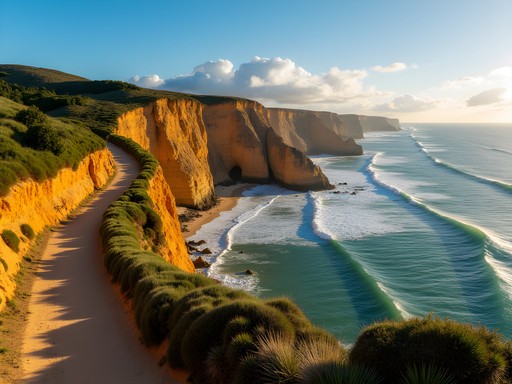



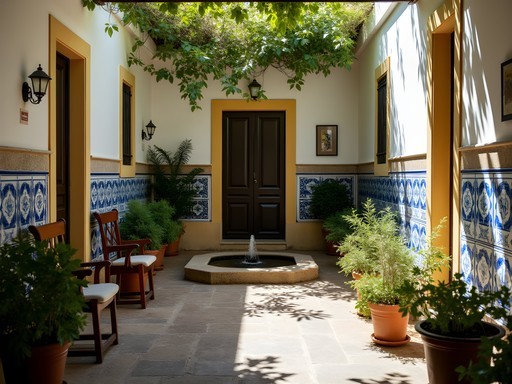
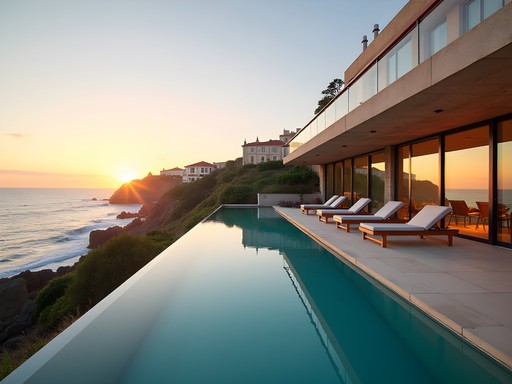






Comments
Bryce Diaz
Taylor, your scientific approach to describing the surf conditions resonated with me! I've been to Portugal six times now, and Cascais remains one of my favorite coastal spots. Last October, I hiked the entire trail from Cascais to Cabo da Roca in one day - exhausting but absolutely worth it for those dramatic Atlantic views. The ecological diversity you mentioned is spot on - I spotted three different species of raptors circling the cliffs near Guincho Beach. One tip for your readers: the winds can pick up dramatically in the afternoon along that coastal trail, so starting early is key. The geological formations at Boca do Inferno are most photogenic at sunrise when the light hits the limestone just right. Looking forward to your next Portuguese adventure!
Taylor Hassan
Bryce, six times to Portugal! I'm impressed. Your tip about the morning hike is gold - those afternoon winds caught me off guard my first day. Did you venture into any of the sea caves? I'm curious about seasonal differences in accessibility.
Bryce Diaz
I did! I found May and September to be ideal for cave exploration - summer crowds are gone but the sea is still relatively calm. Winter is dramatic but many operators close or have limited schedules. The caves near Azenhas do Mar were my favorite - less visited than the ones closer to Cascais proper.
wanderpro
How easy is it to get around Cascais without a car? Planning a trip there next month and wondering about transportation options to reach those cliff areas and caves.
Bryce Diaz
Not the author, but I was just in Cascais last year! The public transportation is excellent. There's a bus (#403) that runs along the coast and stops near Boca do Inferno. For the caves and some hiking trails, the tourism office offers shuttle services during peak season. I also used my waterproof backpack for the sea cave explorations which was a lifesaver when we got splashed!
wanderpro
Thanks Bryce! That's really helpful. Did you find the buses reliable? And good tip about the waterproof gear - hadn't thought about that yet.
Bryce Diaz
The buses were surprisingly punctual! Just download the Moovit app - it was super accurate for schedules. Also, if you're staying for several days, consider getting the Viva Viagem card which works for buses, trains and the metro in Lisbon too.
redrider
Great post! I've always wanted to try surfing in Portugal. Is Cascais good for beginners or should I look elsewhere along the coast?
Taylor Hassan
Thanks redrider! Cascais has some great beginner spots, particularly Carcavelos Beach which has gentler waves and several surf schools. For absolute beginners, I'd recommend starting there before attempting the more challenging breaks!
redrider
Perfect, that's exactly what I needed to know! Adding Carcavelos to my list.
portugal_dreamer
Love this post! The geological info about Boca do Inferno was fascinating.
wave_chaser
How difficult is the surfing for beginners? Planning a trip in October and wondering if it's too challenging that time of year.
Hunter Thompson
October can get pretty wild with Atlantic swells, but there are protected beaches like Carcavelos that are perfect for beginners. Plenty of surf schools there that cater to all levels. The water's still decent temperature too!
wave_chaser
Thanks for the info! Carcavelos sounds perfect for my skill level.
skyzone8528
Those surf photos are incredible! Adding Cascais to my bucket list right now!
Hunter Thompson
Brilliant write-up on Cascais! I spent three weeks there last summer and completely fell in love with the coastal hiking trails. The section of your post about Sintra-Cascais Natural Park brought back amazing memories. For anyone planning to hike there, I'd recommend starting early morning to avoid the midday heat. The trail between Cabo da Roca and Praia da Ursa was my absolute favorite - those dramatic cliffs dropping into the Atlantic are unreal for photos. Also worth mentioning that the local buses to trailheads can be infrequent, so I ended up using my hiking GPS to explore some lesser-known paths. Taylor, did you check out any of the hidden beaches north of Guincho?
Taylor Hassan
Thanks Hunter! I did explore north of Guincho - Praia do Abano was a highlight, much less crowded. Those hidden coves require some scrambling but totally worth it. Completely agree about starting hikes early. The light for photography is better then too!
exploremaster
Just got back from Cascais last week and this post is spot on! The Boca do Inferno was mind-blowing during high tide - we could feel the spray from the viewing platform. Tried surfing for the first time at Guincho Beach and the instructors were super patient with beginners. Didn't make it to the sea caves though - is that something you need to book in advance with a guide?
Taylor Hassan
Glad you enjoyed Cascais! For the sea caves, definitely book with a local guide. The tides can be tricky and some caves are only accessible during specific conditions. I used Cascais Adventures - they provide all the gear and safety briefings.
exploremaster
Thanks for the tip! Will check them out for my next visit.
Charlotte Watkins
Taylor, your geological insights about this coastline added so much depth to my family's visit to Cascais last week! We followed your hiking recommendation through Sintra-Cascais Natural Park and it was perfect for our multi-generational group (ages 9 to 72). The trail markers weren't always obvious though - we downloaded the offline maps you suggested which saved us twice when we almost took a wrong turn. For families reading this: the section from Cabo da Roca to Praia da Ursa is spectacular but quite steep in parts. Our kids handled it fine but bring proper shoes! The hidden beach cove you mentioned about 2/3 along the trail was the highlight - we had it entirely to ourselves for a picnic lunch. Thanks for going beyond the typical tourist spots!
Taylor Hassan
Charlotte, I'm thrilled your family enjoyed the Natural Park hike! You're right about those trail markers - they can be tricky. That hidden beach is one of my favorite spots in all of Portugal. Did you get a chance to examine those fascinating tide pools I mentioned?
Charlotte Watkins
We did! My grandson was absolutely fascinated by the starfish and sea anemones. He's been drawing them constantly since we got back. It's exactly the kind of educational travel experience I try to create for the grandkids. Your geological explanations gave me great talking points too!
tripdiver
The surfing section of this post is GOLD! Tried surfing at Praia do Guincho based on your recommendations and it was perfect for my intermediate level. The way you explained how to read the swells actually helped me catch more waves! My wetsuit was essential though - that Atlantic water is chilly even in summer!
Venture X
Premium card with 2X miles, $300 travel credit, Priority Pass